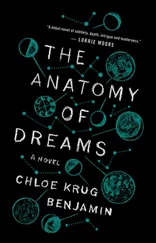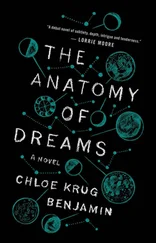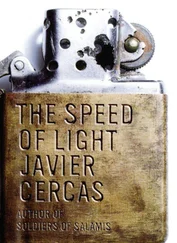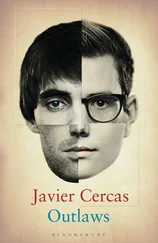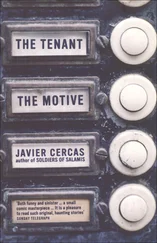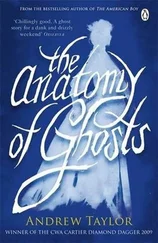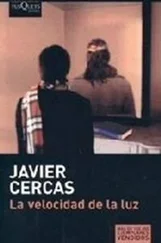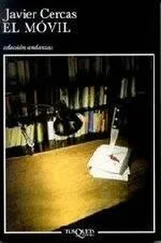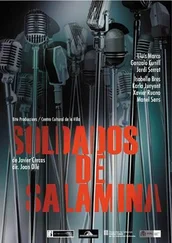Javier Cercas - The Anatomy of a Moment
Здесь есть возможность читать онлайн «Javier Cercas - The Anatomy of a Moment» весь текст электронной книги совершенно бесплатно (целиком полную версию без сокращений). В некоторых случаях можно слушать аудио, скачать через торрент в формате fb2 и присутствует краткое содержание. Год выпуска: 2011, Издательство: Bloomsbury USA, Жанр: Публицистика, История, на английском языке. Описание произведения, (предисловие) а так же отзывы посетителей доступны на портале библиотеки ЛибКат.
- Название:The Anatomy of a Moment
- Автор:
- Издательство:Bloomsbury USA
- Жанр:
- Год:2011
- ISBN:нет данных
- Рейтинг книги:5 / 5. Голосов: 1
-
Избранное:Добавить в избранное
- Отзывы:
-
Ваша оценка:
- 100
- 1
- 2
- 3
- 4
- 5
The Anatomy of a Moment: краткое содержание, описание и аннотация
Предлагаем к чтению аннотацию, описание, краткое содержание или предисловие (зависит от того, что написал сам автор книги «The Anatomy of a Moment»). Если вы не нашли необходимую информацию о книге — напишите в комментариях, мы постараемся отыскать её.
Critically adored novelist Javier Cercas originally set out to write a novel about this pivotal moment, but determined it had already gained an air of myth, or, through the annual broadcast of video clips, had at least acquired the fictional taint of reality television. Cercas turned to nonfiction, and his vivid descriptions of the archival footage frame a narrative that traverses the line between history and art, creating a daring new account of this watershed moment in modern Spanish history.
The Anatomy of a Moment caused a sensation upon its publication in Spain, selling hundreds of thousands of copies. The story will be new to many American readers, but the book stands resolutely on its own as a compelling literary inquest of national myth, personal memory, political spectacle, and reality itself.
The Anatomy of a Moment — читать онлайн бесплатно полную книгу (весь текст) целиком
Ниже представлен текст книги, разбитый по страницам. Система сохранения места последней прочитанной страницы, позволяет с удобством читать онлайн бесплатно книгу «The Anatomy of a Moment», без необходимости каждый раз заново искать на чём Вы остановились. Поставьте закладку, и сможете в любой момент перейти на страницу, на которой закончили чтение.
Интервал:
Закладка:
Perhaps the punishment was still benevolent, but there were no more courts to turn to and the golpistas began to leave prison shortly after their final sentences were handed down. Some were forced out of the Army, but almost all of them had the opportunity to remain, even of course the Civil Guards and NCOs who, in spite of having fired shots inside the chamber of the Cortes and roughed up General Gutiérrez Mellado, were not even tried. There were officers who had notable military careers after the coup: Manuel Boza — a lieutenant shown in the footage of the assault on the Cortes face to face with Adolfo Suárez, probably berating or insulting him — was reinstated in the Civil Guard after serving a twelve-month prison sentence, and in subsequent years received the following decorations for his exceptional merits and impeccable conduct: Civil Guard Cross of Merit with White Emblem, Royal Order of St Hermenegildo, Plaque of St Hermenegildo and Command of St Hermenegildo; Juan Pérez de la Lastra — a captain whose enthusiasm for the coup did not prevent him from leaving his men in the Cortes on the night of 23 February to go home for a few hours’ sleep and come back without anyone noticing his absence — also returned to the Civil Guard once he’d served his sentence, and in 1996 retired with the rank of colonel and with the following decorations granted since the coup: Cross of St Hermenegildo, Command of St Hermenegildo and Plaque of St Hermenegildo. The gratitude of the nation.
Those mainly responsible for 23 February took longer to get out of prison; some of them have died. The last to obtain his liberty was Lieutenant Colonel Tejero, who a year after the coup tried in vain to stand for election with an ephemeral party called Spanish Solidarity whose campaign slogan went: ‘Put Tejero in the Cortes with your vote’; like many of his comrades, during his years of imprisonment he led a comfortable life, guest of honour to some of the wardens of the jails where he served his sentence and converted into an icon of the far right, but when he left prison in 1996 he was no longer an icon of anything or he was just a pop icon, and his only known activities since then are painting pictures nobody buys and sending letters to newspaper editors that nobody reads, as well as celebrating the anniversary of his exploit every February. Milans died in July 1997 in Madrid; he was buried in the crypt of the Alcázar in Toledo, where he had begun his record as a Francoist war hero; like Tejero, he never repented of having organized 23 February, but after that date he abandoned his lifelong monarchism, and over the years he spent in prison spurred on or gave his blessing to almost every new attempted coup d’état, including the one on 2 June 1985 that planned to assassinate the upper echelons of the Army, the Prime Minister and the entire Royal Family during a military parade. Armada, on the other hand, did continue to be a monarchist, or at least he claims to be, even if in none of his numerous public declarations — or of course in his mellifluous and tricky memoirs — has he stopped nurturing the ambiguity about the King’s role in the coup; he was pardoned by a Socialist government at the end of 1988, and since then he has divided his time between his house in Madrid and his country estate in Santa Cruz de Rivadulla, in La Coruña, a baroque aristocratic mansion where until recently he personally looked after a nursery that produced a hundred thousand camellias. As for Cortina, what happened to him after the coup deserves a less succinct explanation.
In the early hours of 14 June 1982, just over a month after the sentence of the Court of Military Justice absolved the intelligence service major, four powerful explosive charges blew up four secret AOME headquarters. The bombs exploded almost at the same time, in a synchronized operation that produced no victims, and the next day the media attributed the attack to a new terrorist offensive on the part of ETA. This was false: ETA never claimed responsibility for the action, which had the Civil Guard’s signature written all over it and could only have been carried out with information from AOME members. Still under the effect of the tremendous military tension provoked by the mass court martial and the sentencing of some of the most prestigious leaders of the Army, there were those who interpreted the quadruple attack as a sign that a new military coup was under way and as a warning to CESID not to get in its organizers’ way this time; it was most likely a more personal warning: many in the military and the Civil Guard were furious with CESID for not having been on the side of the coup on 23 February and for having done everything possible to stop it, but they were even more furious with Cortina, who according to them had launched the golpistas on the adventure, left them in the lurch and then managed to come through the trial unscathed. This ominous precedent and certain coincidences of dates and locations explain the doubts aroused by an episode that happened a year later, 27 July 1983. That day, just months after the Supreme Court passed their definitive ruling at least doubling the length of the sentences of most of those found guilty of the 23 February coup, Cortina’s father burned to death in a fire at his home; the fact that the location was, according to Tejero, where his interview with the major had taken place in the days leading up to the coup, not to mention the circumstances of the calamity — at four o’clock in the afternoon while Cortina’s father was taking his siesta — reinforced the hypothesis of revenge. Cortina and the investigators attributed the fire to an electrical short-circuit; the explanation convinced almost no one, but the truth is not always convincing. Be that as it may, after the trial Cortina was reinstated in the Army; although he never returned to the intelligence services — all his assignments from then on were related to logistics — he did not manage to dispel the suspicions that hung over him, his equivocal reputation followed him everywhere and in recent years the Army has hardly had a single scandal not somehow associated with his name. In 1991, by then promoted to colonel, he was relieved of his command for facilitating a leak to the press of secret plans of military operations, but, in spite of being finally absolved of the accusation of negligence, by then he’d already requested a transfer to the reserves. Later, for a time, he served as adviser to a deputy prime minister in José María Aznar’s government, and at present he runs a logistics firm called I2V and participates in a family security business. As I complete this book he is an athletic old man, with sparse white hair, freckle-spattered scalp, gold-rimmed glasses and a boxer’s nose, an affable, ironic and cheerful man, who has an autographed portrait of the King in his office and for many years has not wanted to hear a word about 23 February.
Chapter 2
During the months that followed the failure of the coup d’état some democratic politicians and journalists frequently repeated that the coup had triumphed, or at least that it hadn’t entirely failed. It was a figure of speech, a way of pointing up what they considered a shrinking of democracy after 23 February. The coup did not triumph, it didn’t even triumph in part, but in the short term some of the golpistas ’ political objectives seemed to be fulfilled.
What in theory was the golpistas ’ fundamental political objective? For Armada, for Cortina, for those who thought like Armada and Cortina — not for Milans or for Tejero or for those who thought like Milans and Tejero, who were undoubtedly the majority of the golpistas — the fundamental political objective of 23 February consisted of protecting the monarchy, rooting it in Spain and correcting or trimming or shrinking a democracy that in their judgement constituted a threat to it. To achieve this fundamental objective they had to achieve another fundamental objective: put a stop to the political career of Adolfo Suárez, who was mainly responsible for the state of affairs; then they had to put a stop to that state of affairs: they had to put a stop to the risk of a hard-core, anti-monarchist coup, had to put a stop to terrorism, had to put a stop to the Estado de las Autonomías or put it in brackets or humble its pretensions and consolidate national feelings, had to put a stop to the economic crisis, had to put a stop to international policies that irritated the United States because they were distancing Spain from the Western bloc, had to narrow the space for tolerance in all areas, had to teach the political class a lesson and had to give the country back its lost confidence. Those were in theory, I insist, the objectives of 23 February. In the months after the coup — while the country tried to take in what had happened, awaiting the golpistas ’ trial with more scepticism than fear, and while the government and the opposition practised the politics of pacification with the military and certain politicians and many journalists denounced the reality of a democracy watched over by the Army — some of them were immediately fulfilled. Adolfo Suárez’s political career ended on 23 February, just as he carried out his last truly political act by remaining seated while the bullets whizzed around the chamber of the Cortes: without the coup Suárez might have had some chance to return to power; with the coup he had none: perhaps we can admire heroes, perhaps we can even admire heroes of the retreat, but we don’t want them to govern us, so after 23 February Suárez was nothing more than a survivor of himself, a posthumous politician. After the coup d’état all official offices, every municipal balcony, all the party headquarters and all the autonomous-government assemblies suddenly bloomed with national flags, and all the jails filled with common criminals. The coup d’état, it has often been said, was the most efficient vaccination against another coup d’état, and it’s true: after 23 February Leopoldo Calvo Sotelo’s government invested billions in modernizing the Armed Forces and carried out a far-reaching purge — replaced the Joint Chiefs of Staff en masse, retired the most Francoist generals, rejuvenated the command structure, strictly controlled promotions and remodelled the intelligence services — and, although after 1981 there were still several attempts at military rebellion, the truth is they were organized by an ever more eccentric and isolated minority, because 23 February not only discredited the golpistas in the eyes of society, but also in the eyes of their own comrades-in-arms, thus hastening the end of a two-century tradition of military coups. Barely three months after 23 February, the government signed the NATO accession treaty that Suárez refused to sign for years, which reassured the United States, contributed to civilizing the Army by putting it in contact with democratic armies and embedded the country firmly in the Western bloc. A short time later, at the beginning of June, the government, businessmen and trade unions, with the support of politicians from the other parties and a similar intention to that behind the Moncloa Pact, signed a National Employment Accord, which halted the daily destruction of thousands of jobs, reduced inflation and meant the start of a series of changes that heralded the beginning of the economic recovery of the mid-1980s. And a month and a half later the government and the opposition, amid howls of protests from the nationalists, signed the so-called LOAPA, an organic law defending the need to rationalize the autonomous powers of the regions that tried to put the brakes on the decentralization of the state. The terrorists did not stop killing, of course, but it’s a fact that after the coup the attitude of the country changed towards them, the left did its best to wrest away the alibis it’d allowed them, the Armed Forces began to notice the solidarity of civil society and the governments began to fight against ETA with instruments Suárez never dared use: in March 1981 Calvo Sotelo authorized the Army’s intervention in the anti-terrorist struggle on land and maritime borders, and just two years later, recently arrived in power, the Socialists created GAL, a group of state-financed mercenaries who began a campaign of kidnapping and assassinating terrorists in the south of France. The greater social belligerence against terrorism was just one aspect of a wider social change. Seventeen and a half hours of humiliation in the chamber of Parliament amounted to a sufficient corrective for the political class, who seemed to find a sudden forced maturity, shelved for a time their furious inter-party rows and the furious greed for power that had served to create the placenta of the coup, stopped speculating with shady operations of constitutional engineering and did not mention again caretaker or interim or salvation or unity governments or involving the Army in any way; no less tough was the lesson for the majority of the country, which had passively accepted Francoism, had been excited at first by democracy and then seemed disillusioned: the disenchantment vanished overnight and everyone seemed to rediscover with enthusiasm how good liberty was, and maybe the best proof is that a year and a half after the coup an unknown majority of Spaniards decided there would be no real reconciliation until the heirs of the losers of the war governed again, permitting a rotation of power that ended up consolidating democracy and the monarchy. This is another secondary effect difficult not to credit, at least partially, to 23 February’s account: at the beginning of 1981 it was still difficult to imagine the Socialist Party governing Spain, but in October of the following year it came to power with ten million votes and all the congratulations of the monarchy, the Army, businessmen and bankers, journalists, Rome and Washington.
Читать дальшеИнтервал:
Закладка:
Похожие книги на «The Anatomy of a Moment»
Представляем Вашему вниманию похожие книги на «The Anatomy of a Moment» списком для выбора. Мы отобрали схожую по названию и смыслу литературу в надежде предоставить читателям больше вариантов отыскать новые, интересные, ещё непрочитанные произведения.
Обсуждение, отзывы о книге «The Anatomy of a Moment» и просто собственные мнения читателей. Оставьте ваши комментарии, напишите, что Вы думаете о произведении, его смысле или главных героях. Укажите что конкретно понравилось, а что нет, и почему Вы так считаете.

